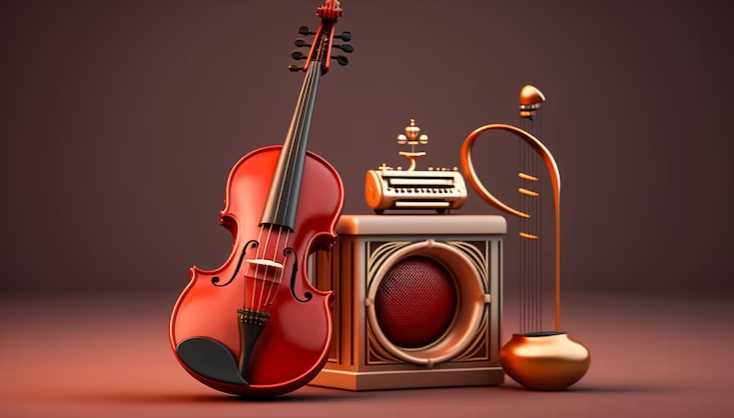In the symphony of human existence, classical music stands as a perpetual overture, echoing through the corridors of time with a resonance that transcends epochs. The Everlasting Influence of Classical Music is a journey through the ages, an appreciation guide that unveils the profound beauty and enduring impact of a musical tradition that has shaped the very fabric of our cultural heritage. As we delve into the intricate harmonies and dynamic compositions of masterful minds from Bach to Beethoven, this exploration seeks to illuminate the reasons behind the everlasting allure of classical music.
Classical music has been a constant companion to humanity’s triumphs and tribulations, from the structured elegance of the Baroque era to the emotional intensity of the Romantic period and the avant-garde innovations of the 20th century. Beyond its chronological significance, this guide aims to decipher the universal language of emotion encapsulated within these compositions. As we navigate the historical tapestry, we find that classical music speaks not just to the ears but to the very soul, tapping into a shared reservoir of human experience that spans continents and centuries.
1. The Historical Tapestry of Classical Music
- The Historical Tapestry of Classical Music unfolds as a rich and intricate narrative, weaving together various epochs’ diverse styles and innovations, shaping the course of musical history. This journey commences with the Baroque period (1600-1750), characterized by the mastery of composers like Johann Sebastian Bach and Antonio Vivaldi. In this era, intricate counterpoint and ornate structures laid the groundwork for the classical tradition, setting the stage for the emergence of a musical language that would transcend time.
- Transitioning into the Classical era (1750-1820), luminaries such as Wolfgang Amadeus Mozart, Joseph Haydn, and Ludwig van Beethoven refined musical forms. They introduced a delicate balance between emotional expression and structural sophistication. This period saw the zenith of the symphony and sonata, enduring pillars of classical composition.
- As the historical tapestry unfurls further, the Romantic period (1820-1910) emerges with a passionate and individualistic spirit. Composers like Frédéric Chopin, Franz Schubert, and Pyotr Ilyich Tchaikovsky infused their works with profound emotional depth, expanding the expressive possibilities of classical music.
- In the twentieth century, they witnessed the splintering of traditions through the lens of Modernism, where Igor Stravinsky and Claude Debussy pushed the boundaries of tonality and form. Each era contributes a unique hue to the tapestry, creating a narrative that speaks of musical evolution and reflects the cultural and societal shifts of its time.
- The historical tapestry of classical music invites listeners to traverse a continuum of artistic expression, appreciating the enduring legacy of each era’s contributions. It serves as a testament to the dynamic nature of classical music, reflecting the innovations, emotions, and societal currents that have shaped its evolution. By understanding this historical context, listeners gain a deeper appreciation for the diverse styles and complexities that make classical music a timeless and ever-evolving art form. The tapestry inspires and resonates, connecting audiences across generations to the rich history and cultural heritage embedded within classical compositions.
2. The Universal Language of Emotion
- The Universal Language of Emotion in classical music transcends cultural and linguistic boundaries, creating a profound and shared connection between composers and listeners. This unique characteristic underlines classical compositions’ timelessness and global resonance, making them a powerful means of emotional expression that spans diverse cultures and historical periods.
- Classical music has an extraordinary capacity to elicit a spectrum of emotions universally. Beethoven’s triumphant “Ode to Joy” from Symphony No. 9 is an exemplary testament, resonating with a sense of shared humanity that transcends geographical boundaries. The emotional impact of classical music is not confined to specific regions or linguistic groups; instead, it operates on a level that speaks directly to the human experience.
- The inherent beauty of a Mozart concerto or the poignant melodies of a Chopin Nocturne communicates emotions that resonate across time and place, creating a shared emotional experience for listeners worldwide. Classical music becomes a universal language, expressing joy, sorrow, passion, and introspection with a depth that transcends cultural contexts. It serves as a bridge, connecting individuals across continents and centuries through a shared emotional tapestry.
- Classical music is a language of emotion that surpasses verbal communication. Its ability to evoke a visceral response on a universal scale establishes it as a medium that speaks directly to the human soul. Whether performed in a grand concert hall or experienced in an intimate setting, the emotional language of classical compositions forges a connection that goes beyond linguistic and cultural boundaries, creating a shared human experience.
- In appreciating the universal language of emotion within classical compositions, listeners find themselves connected to a shared human experience that defies the constraints of language and cultural differences. This emotional resonance makes classical music a timeless art form, perpetually relevant and capable of transcending the limitations of time and geography.
3. The Influence on Contemporary Music
- The Influence on Contemporary Music underscores the enduring impact of classical music on modern musical genres, creating a fascinating interplay between tradition and innovation. Classical motifs and structures have inspired contemporary artists, leading to a dynamic fusion of the old and the new, enriching the musical landscape with diversity and innovation.
- Film scores are a prominent example of classical music’s influence on contemporary storytelling. The iconic use of Richard Strauss’s “Also Sprach Zarathustra” in Stanley Kubrick’s “2001: A Space Odyssey” exemplifies how classical elements enhance cinematic narratives’ emotional depth and impact. Beyond the silver screen, classical influences permeate various genres, creating a musical tapestry that bridges historical traditions with avant-garde experimentation.
- Countless musicians across genres incorporate classical elements into their compositions, infusing orchestral arrangements, harmonic complexities, and intricate structures into pop, rock, and electronic music. This cross-pollination has given rise to a musical landscape that is both innovative and diverse, showcasing the adaptability of classical music across temporal boundaries. The integration of classical elements into contemporary genres pays homage to the rich historical legacy and breathes new life into classical motifs, ensuring their continued relevance.
- As listeners explore the connections between classical and contemporary sounds, they witness the transformative power of classical music, evolving dynamically in the ever-changing landscape of modern musical expression. This symbiotic relationship between classical roots and contemporary branches serves as a testament to classical music’s timeless adaptability and influence.
- Classical music serves as a wellspring of inspiration for contemporary artists, offering a reservoir of artistic techniques and expressions that transcend temporal constraints. This intergenerational dialogue between classical and modern music preserves the legacy of classical compositions. It ensures their perpetual relevance, contributing to the richness and complexity of the musical mosaic in our modern era.
4. The Transformative Power of Live Performances
- The Transformative Power of Live Performances in classical music is a multifaceted and immersive experience that transcends the boundaries of recorded sound, creating a dynamic connection between performers and the audience. Stepping into a concert hall for a live classical performance is akin to embarking on a sensory journey, where ethereal vibrations and the collective energy of musicians converge to create an unforgettable experience.
- In the live setting, the audience actively participates in a composition’s unfolding narrative. The dynamic interplay between musicians and listeners creates an atmosphere charged with emotional resonance. Strings resonate, brass reverberates, and woodwinds delicately contribute to shaping a communal and transcendent environment. The very act of witnessing the creation of music in real time transforms the passive act of listening into an interactive and profoundly engaging encounter.
- Beyond showcasing technical prowess, the transformative power of live classical performances lies in the shared experience among those in attendance. The palpable energy in the concert hall, the collective silence during poignant moments, and the thunderous applause at the culmination of a virtuosic performance contribute to an atmosphere where time seems to stand still. The synergy between performers and audience members creates a symbiotic relationship, elevating the emotional impact of the music.
- Live performances also offer a unique opportunity for interpretation and reinterpretation. The same piece can take on new dimensions depending on the conductor’s understanding, the nuances of individual performers, and the audience’s response. This variability adds an element of unpredictability and freshness to each live rendition, making each performance a unique and irreplaceable moment in time.
- By embracing the transformative potential of live classical music, listeners immerse themselves in an art form that goes beyond auditory stimulation. It becomes a shared, transcendent experience that enriches the understanding and appreciation of classical compositions and fosters a deep connection between the performers and the audience. Memories forged in the presence of live classical music resonate long after the final notes have faded away, serving as a testament to the enduring impact of this art form on the hearts and minds of those fortunate enough to be part of the live performance experience.
Conclusion
In the final crescendo of our exploration, we find ourselves standing at the intersection of tradition and innovation, where classical music’s everlasting influence continues to shape our cultural landscape. The journey through historical epochs, the discovery of its universal emotional language, the exploration of its impact on contemporary genres, and the immersion in the transformative power of live performances all contribute to an appreciation that transcends the limitations of time.
As we bid farewell to this appreciation guide, let us carry with us the melodies that have stood the test of centuries and the harmonies that have resonated across cultures. Classical music is not a relic of the past but a living, breathing entity that thrives in the hearts of those seeking solace. May this guide serve as an invitation to explore, appreciate, and, above all, cherish the everlasting influence of classical music. This timeless legacy continues to inspire, uplift, and connect us through the profound language of sound.





